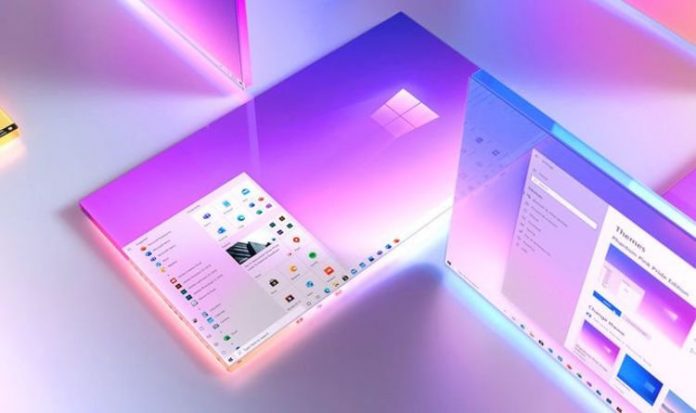Microsoft has started to roll-out the Windows 10 October Update – the second of two substantial upgrades planned for the operating system this year. While Microsoft regularly rolls out bug fixes and performance improvements to the one billion devices powered by Windows 10, it saves the biggest new features for two blockbuster updates each year. Windows 10 October Update brings a redesigned Start Menu, deeper integrations for the overhauled Microsoft Edge web browser as well as a number of useful new tweaks.
As with any major operating system update, especially one used on such a wide variety of hardware from a wide variety of manufacturers, there are some known issues with the new update. Microsoft has confirmed four problems that it has unearthed in the latest feature-packed update, which includes a problem when installing some third-party drivers, issues when updating audio drivers, as well as problems for Microsoft IME typing software in Japanese or Chinese languages.
Of course, as more and more people rush to install Windows 10 October Update, we’d expect that list of known issues to start to grow pretty rapidly, but these are the problems spotted by Microsoft out of the gate.
If you’re fortunate enough to avoid any of these problems, there’s some exciting new stuff to be found in the Windows 10 October Update. First up, there’s the new Start Menu. Windows 10 has been available for half a decade now, but in all of that time, Microsoft hasn’t touched the look of the Start Menu. That makes sense – after all, the Start Menu is one of the most important features in the operating system as it acts as your primary gateway to apps installed on your machine, the files stored locally or in the cloud, and settings.
MORE LIKE THIS
Surface Laptop Go launches with UK price that’ll have Google worried
With Windows 10, Microsoft addressed one of the most common complaints with the previous versions of the operating system, Windows 8 and Windows 8.1, and killed the fullscreen list of apps in favour of a traditional pop-up menu. But now, five years after it launched Windows 10 worldwide, it seems Microsoft is ready to make some tweaks to the Start Menu. Thankfully, the company has returned to the disastrous fullscreen look we suffered through with Windows 8, however, it now offers a much cleaner Start Menu with a translucent background that gently blurs into your desktop background image – or any of the windowed applications that happen to be running when you launch the pop-up menu.
Known as Fluent Design, Microsoft is slowly bringing this softer look to more and more of its applications and icons. Speaking of icons, there are less busy when compared with the previous design. Icons are located in the middle of the tile with translucent open space around the edges – instead of filling the entire square, like you’ll find on earlier iterations of the Windows 10 Start Menu.
Don’t worry though, Live Tiles will still be very much part of the design. This is one of the trademark features of the latest version of Windows and surfaces new emails, headlines and weather updates in the small icon within the Start Menu – so there’s no need to click to open specific apps to find out what you need to know.
If you’re interested in personalisation, Microsoft now lets you add an accent colour to jazz-up the look of the Start Menu. This colour will also run through the taskbar and Action Centre in the Windows 10 Settings.
Elsewhere, the Windows 10 October Update adds the option to increase the refresh-rate of your display direct from the Settings menu …rather than having to dig through the standalone settings menu shipped with your graphics card software. Notifications now include a small app logo, so you’ll be able to find out which application is vying for your attention with a glance. Microsoft has also ditched notification when using Windows 10 in tablet mode.
The final change will appeal to those who use Microsoft Edge as their primary web browser. Launched earlier this year, the new Microsoft Edge might share its name with the much-maligned app that launched alongside Windows 10 five years ago.. but that’s all they have in common. Built from the ground up using the same Chrominium codebase that powers the Google Chrome browser, Microsoft Edge has a stripped-back design, faster performance and baked-in compatibility with all Chrome extensions, web apps, and more. It was a bold move, but one that seems to have seriously paid off.
Microsoft Edge is now the second most popular web browser on the planet… although, it’s still comfortably behind Google Chrome.
With Windows 10 October Update, the new web browser is more integrated into the desktop operating system. For example, if you pin websites to your taskbar, hovering over the icon will bring up previews of all the tabs you have open for that site. Not only that, but Windows 10 October Update changes how alt-tab switching between windows will work. Not only will you be able to zip through the apps you have open, but individual tabs open in Edge will appear in that view. So, you can quickly switch between two open Edge tabs and a Word document by hammering the same alt-tab shortcut on your keyboard. Simples.
As always, Microsoft staggers these blockbuster updates, so it could take some time before Windows 10 October Update appears on your PC. However, everyone should be running the latest operating system version within the next week or so.




